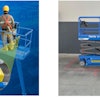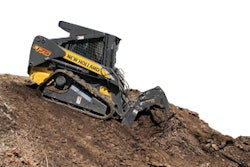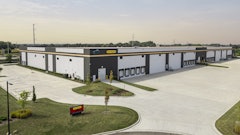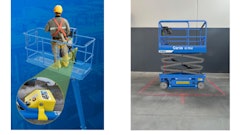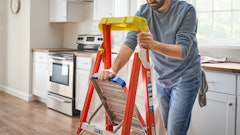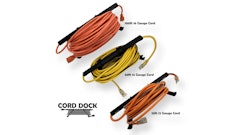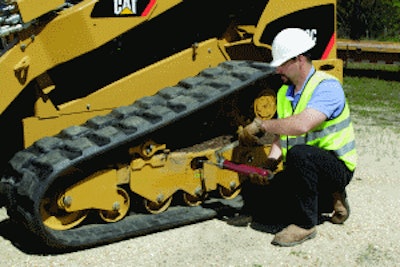
The undercarriage life expectancy of a compact track loader is subject to too many variables to predict with any degree of accuracy. But you can measure its life against various baselines to get an idea if costs are running out of control.
Mike Fitzgerald, Bobcat loader product specialist, estimates the average life of rubber tracks to be between 1,200 and 1,600 hours. However, it depends on the operating conditions and the application.
"Rental machines will have tracks last in the 800- to 1,200-hour range. Some severe-duty applications that are more abusive to tracks may get less than 800 hours," he points out, adding that contractors performing only earthwork might see track life in the 1,600- to 2,000-hour range. "I recently looked at a machine that had just under 1,800 hours of use. The tracks were only 50% worn, but the loader had not done a significant amount of work on streets or parking lots. That machine is used for backfilling dirt around building sites."
According to Cameron Stejskal, product specialist, Terex Construction Americas, "There are four main factors that affect undercarriage wear: application, underfoot condition, operating technique and maintenance practices. Wear and tear is directly affected by operator knowledge and the operating conditions."
The undercarriage is the most costly part of any tracked machine; it can make up almost 20% of its purchase price and nearly 50% of maintenance costs over its service life. "Such valuable components should never be neglected," Stejskal emphasizes. "It is extremely important to keep the undercarriage clean. This helps ensure longevity of components and keeps operating costs down."
Maintenance practices
Track maintenance - which includes proper tensioning, cleaning and inspection - should be done on a regular basis. "Follow the schedule in the operator's manual," says David Steger, national product and training manager, Takeuchi, "but undercarriage inspections should be more frequent when in muddy or abrasive conditions."
Check for uneven wear. "The components are designed to wear evenly," says Stejskal. "If some components wear more quickly than others, it can affect the productivity and wear all of the components."
Keeping the machine clean will make it easier to identify potential problems, and decrease wear due to debris lodged between components. Cohesive and abrasive materials such as mud, clay and gravel should be cleaned out as often as possible.
"At the end of the day, knock away any debris that's accumulated in the tracks, and then while the machine is still warm, wash it down to get rid of any remaining materials that could cause corrosion or contamination," says Stejskal. "The end of the day wash-down process is a good time to remove embedded foreign objects from the tracks and lubricate all moving parts. The daily wash down is also an excellent time to look for any loose, worn, cracked, bent or missing components."
It's also the perfect time to check the track for cuts, punctures or tears. "Sprockets and rollers should be inspected to ensure they are in good condition with no damage, excessive wear or 'flat spotting,' which may be an indication of material buildup or bearing seizure" advises Steger. "Any oil leakage from rollers, hoses or travel motors should be repaired immediately. It is recommended to replace the sprockets each time new tracks are installed."
Check track tension regularly. Running too tight or too loose creates problems. "If you run tracks too tight, you will use more power and cause premature wear because they are tighter and there is more friction," notes Fitzgerald. "If you run in sand or small granular material, a tight track will force that material between the metal parts and wear on them."
It is best to err a little on the loose side. "If you want to run to one side or the other within the specification, our recommendation would be to run them slightly on the loose side, because running on the tight side really doesn't do much for you," says Fitzgerald. "If they are loose, the material will shed better. However, if they are way too loose, the tracks will come off. You can go too far."
The operating environment can be a contributing factor in premature component wear. "For rubber tracks containing steel imbeds and cords, salty environments can contribute to accelerated track wear due to the corrosive nature of salt and airborne water vapor containing salt," says Kevin Coleman, senior marketing project engineer for Caterpillar's Building Construction Products Group. Remove salt deposits by washing at your earliest opportunity.
Just by cleaning the tracks, maintaining the proper tension and inspecting on a regular basis, you can reduce operating costs significantly.
Replacement
No matter how well you take care of your CTL's tracks, there will come a time when they need to be replaced. Several things should be considered when doing so. "Improper tension, improper operation and/or derailment can all cause damage to the rubber carcass and the internal structure of the track," says Kevin Coleman, "Once the track can no longer maintain proper tension and/or efficiently transfer power to the ground, it may be time for a replacement."
Use of aftermarket (non-OEM) tracks or undercarriage parts can contribute to track failure, as well. "Some aftermarket tracks are not made with the same rigorous standards as OEM parts," says Coleman. "Manufacturing processes and rubber compounds have a huge affect on the quality of the track being purchased. OEM parts have been designed and tested to work with your machine to produce maximum machine productivity and maximum track life. Aftermarket tracks may cost less, but you get what you pay for and the life you achieve will likely be proportional to the cost."
Stejskal agrees, noting, "I strongly advise our customers to stay with OEM tracks. Aftermarket tracks do not fit properly - the track is either too long and you are halfway out of track adjustment right away, or the tracks are too short and they are extremely hard to get on, if you can get them on at all. In addition, some aftermarket tracks do not mesh with the sprockets properly; when this happens, you start to damage that track."
Steger adds, "Aftermarket replacement tracks can sometimes be cheaper to purchase, but be aware that the quality of tracks varies. When shopping, consider the total operating cost of the component. A cheaper initial purchase may add up to higher cost per hour over the OEM brand when factoring variables such as initial cost, life expectancy, machine downtime, replacement labor and warranty/support."
Bobcat actually offers two different types of rubber tracks for its loaders. "We have the OEM track that we send out of the factory," notes Fitzgerald. "Through our parts operation we also offer a less-expensive alternative track, which meets original design specifications, but will not have the same life due to differences in the rubber content or compound. It is lower cost, but it is not going to last as long."
Bobcat does caution users to beware of many aftermarket alternatives. "It is very critical to have the right length and pitch of track so it matches properly with the sprockets," says Fitzgerald. "If it doesn't match you will prematurely wear either the metal imbeds, the sprocket on the machine, or both." It is also important to note that a less costly track will probably utilize lighter weight components. "You may run into problems with either cables in the track or imbeds breaking prematurely." In addition, they may be more prone to cracking, cutting and chunking.
Steel tracks
Bobcat offers steel tracks as an option to the traditional rubber tracks fitted on most of today's compact track loaders. These tracks expand the capability of compact track loaders into applications where rubber track life is an issue.
"The request came from people who were seeing premature wear or low hour life on rubber tracks," says Fitzgerald. For instance, demolition contractors like how compact track loaders perform, but jagged asphalt or concrete is better suited to steel tracks. Steel is also better for use in applications with jagged rock underfoot conditions.
The performance of steel tracks can make them a better choice for many earthmoving applications, as well. "Rough site work is more conducive to steel tracks," says Fitzgerald. A rubber track machine can then be brought in for the finish work.
"The steel track is somewhat heavier, although it is shorter in length and ground contact area," says Fitzgerald. "You can push more with a steel track because you have more weight, as long as you are on a solid underfoot surface. If you are in soft underfoot conditions, there are more pounds per square inch, so the steel tracks may sink in more. A wider rubber track would allow you to float on top better.
"In order to justify the additional cost of steel tracks, you basically have to figure they are going to last about two and a half times as long as a set of rubber tracks," says Fitzgerald. "That is kind of a rule of thumb."


